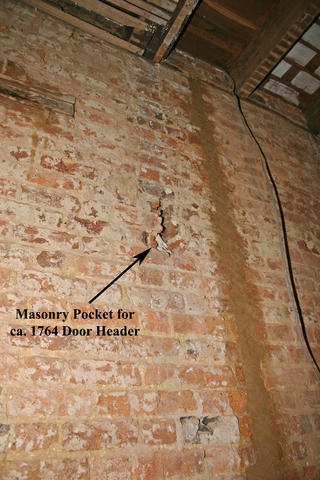
The second source of information consulted was found on the walls and framing near the southeastern door's ca. 1764 location. The height of the long missing doorway was found by looking at the masonry pocket created by the door's header. The original width of the missing doorway was determined by looking at the the girt found above the doorway. Empty ca. 1764 mortises on the girt allowed the Team to determine how far apart the studs were that framed the doorway. By combining the height of the header with the width of the space between the studs, the missing doorway's original rough opening could be determined. The dimensions for the rediscovered rough opening were then compared to the three reused ca. 1764 doorframes. Afterward, it was discovered that two of the three reused ca. 1764 door frames possibly fit into location. While it was great to narrow down the possible choices to two, it still left the Restoration Team with a major question: Which of the two was the right frame for the southeastern doorway?

©The Montpelier Foundation
|
|
Evidence of the southeastern doorway found on ca. 1764 brickwork. |







